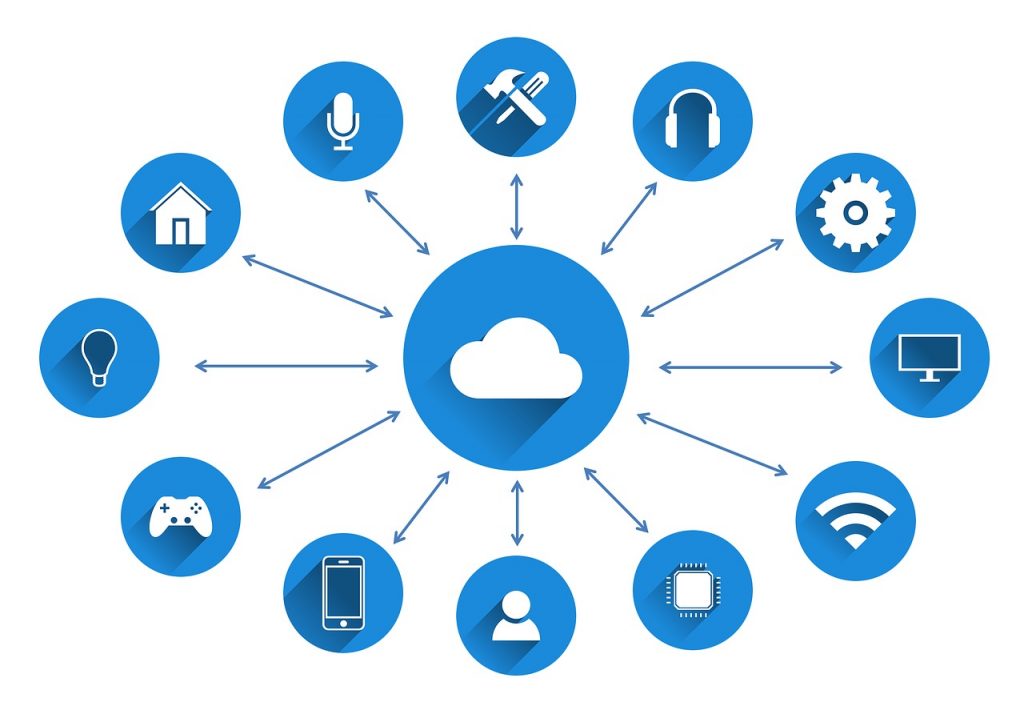Rob Van Kranenburg sees Internet of Things as a concept divided in the so-called four layers.
The first layer is associated with the identification of each device connected to the network.
The second layer can be considered as a network of its own things. This is what smart home actually is. And if several years ago we had a really vague idea about what a smart home is, now we see how our “home” can control a variety of devices in it.
Another layer is the urbanization. Speaking about smart homes we couldn’t but touch the concept of a smart city. The information about you or your neighbours is collected and then stored in some particular area.
And the last layer, the biggest one, is the concept of a sensory planet.
To cut it short, the Internet of things is seen as a network of smaller networks.
Internet of Things shows great results in many (even unexpected) areas. The devices under such network can be used not only in lifestyle innovations but also in agriculture for example.
Succesful corporations and business owners immediately spotted the potential of IoT. Now they make solid profit from the investments they made into its development.
Among such corporations, stand IBM, Microsoft, Google and Apple.
The Internet of Things is a complex system consisting of three levels:
- The first one is infrastructure. That is a computer programme on a corporate server that analyzes and processes data received from connected devices.
- The next one is smart gadgets. Devices that interact with others (sensors, applications, sensors) and with the network. They can automatically transmit different data to each other, while the computer program analyzes the information received.
- And of course, applications. These are mobile, web or hybrid IoT applications which allow users to manage connected objects using smartphones, tablets or PCs.
Today, developing IoT applications is one of the main technology trends. Building mobile and web applications that can control the work of various items and make them interact with each other is becoming increasingly popular.
These are also IoT applications that transfer data to a specific center where they are being processed. Based on the analysis received, these applications automatically perform required actions.
The benefits of investing in the development of IoT mobile and web applications
1. Improving workflow efficiency
There are many options for developing mobile and web applications for solving various problems of companies.
Perhaps the main goal that they are trying to achieve with the help of IoT applications is to optimize and automate business processes.
For example, a promising opportunity is the creation of products that make it possible to exclude human participation from certain operations.
2. The health care revolution
Above, we gave an example of using IoT applications in this area, but there may be countless such examples. Portable devices and applications that monitor the state of human health. Devices that measure such parameters as pulse, blood sugar level, etc.
Applications that instantly analyze information and make reasonable assumptions show the most likely options for diagnosis, etc., which is especially useful in identifying rare or new diseases, as well as those that have similar symptoms with others (or contradictory). Mobile and web solutions that simplify the decision-making process.
Thus, we can talk about the huge potential of the Internet of Things in the field of healthcare, and especially about the development of IoT web and mobile applications.
3. New educational environment
According to forecasts, the development of IoT applications will have a significant impact on the field of education. Probably soon we will witness the evolution in this environment. Nowadays, high-tech solutions penetrate schools, colleges and universities, changing the approach to learning.
So, today there are various digital devices that are widely used in classrooms, including mobile and web applications, platforms, smartphones and tablets to form the most effective educational conditions.
For example, an IoT application with many different tests, videos, etc., which tracks user activity (the time it takes to answer questions, the tests themselves, etc.) and processes the results.
Further, the teacher receives a report on each student: identifying complex and simple (individually) questions and topics that cause particular difficulties, etc. And thanks to their analysis, it becomes clear what should be improved in the program.
4. Innovative retail technology
Retail is among those industries for which the introduction of IoT solutions (applications, devices) will contribute to the success of the company. One of the best examples of innovative approaches are beacons.
Beacons are small IoT devices that interact with smartphones using a Bluetooth connection. They can perform various tasks: collect data about the behavior of visitors, send them inside the building, automatically send push notifications to their smartphones and much more.
Many shopping centers and supermarkets have already begun to actively use beacons to increase sales and build customer loyalty.
And it really works. Read about the benefits and use of beacons in our article.
5. Significant reduction in the number of car accidents
Developing IoT applications is one of the best technologies available for monitoring road situations, weather conditions, etc.
Creating applications that interact with a variety of sensors and sensors that collect data and can record any activity, as well as notify drivers of traffic jams, construction work and show optimal routes, is an excellent solution for optimizing traffic.
Development of mobile and web applications for these purposes is one of the main directions of development of the Internet of things.
6. Regulation of heating / lighting
Today, the Internet of Things has caused a wide distribution of temperature, pressure, vibration, and lighting sensors that connect to each other, IoT applications, and the network itself. This allows you to build a network of interconnected devices for regulating heating and lighting.
7. Improving the functioning of research
Sensors and sensors can now be installed even on geological formations, plants, etc.
These devices are able to send signals about any changes in the state, conditions of growth and development, etc., to the IoT application, which processes the received data and shows the results to the user.
In this way, the process of conducting experiments and experiments, as well as various studies in general, is being improved.
DevOps as a ServiceDevOps on autopilot
CTO as a ServiceStregthen your team
Software testingEnsure software quality
Discovery phasePlan your priduct from a to z
Cloud ServicesGeneral information about healthcare cloud services
Google Cloud ServicesEnsuring confidentiality when working with medical systems
AWS Cloud ServicesServices specially designed for the healthcare industry
Microsoft Cloud ServicesPlatform processing, analyzing and sharing medical data


